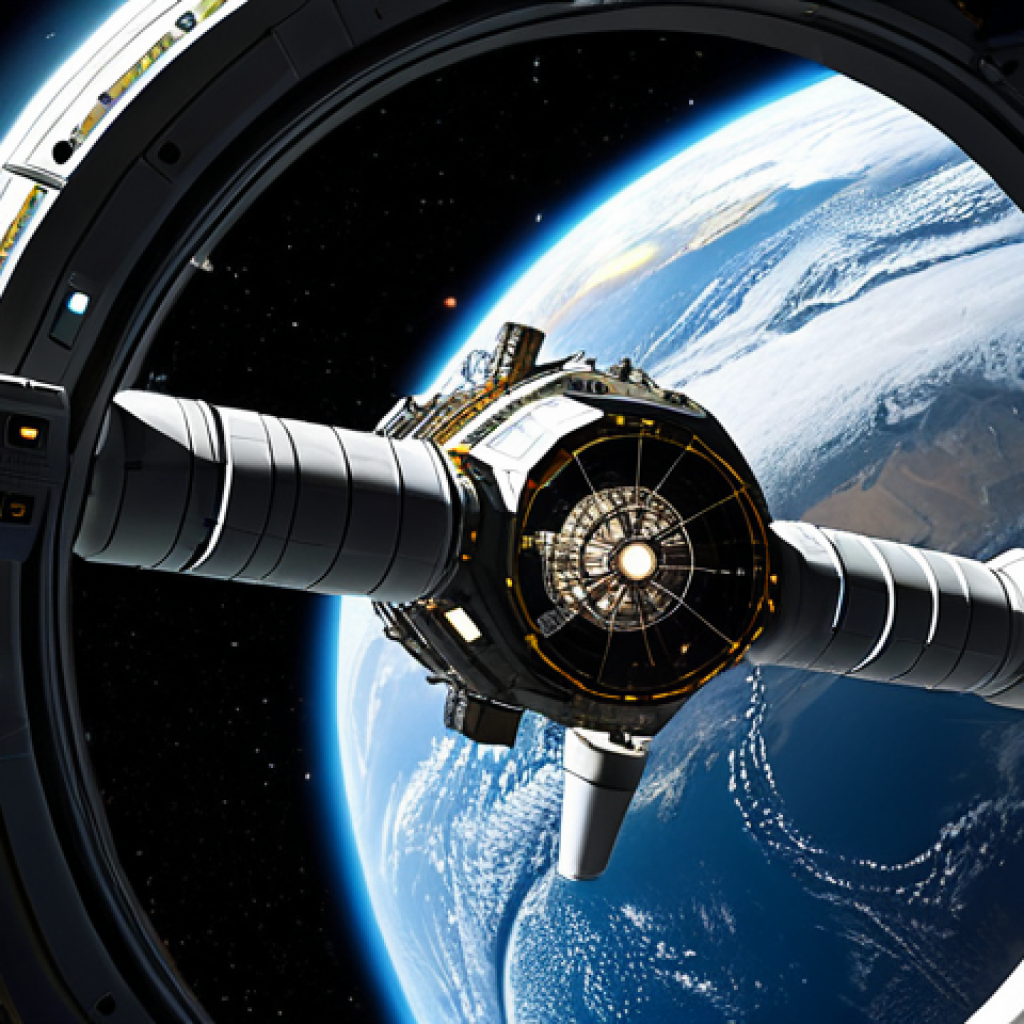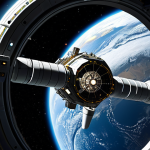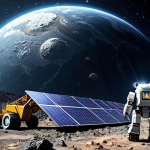Imagine a future where reaching for the stars isn’t just a dream, but a logistical challenge. We’re talking about establishing supply lines that stretch across the vast emptiness of space, ensuring astronauts on Mars have the tools and resources they need, and perhaps even fueling interstellar voyages.
It’s a whole new ball game for logistics, far beyond anything we’ve dealt with on Earth. The scale of the challenge is mind-boggling, requiring innovations in propulsion, storage, and even the fundamental way we think about delivering goods.
Space logistics is the backbone of humanity’s expansion into the cosmos. It’s about more than just delivering packages; it’s about enabling a future among the stars.
Considering the recent advancements in reusable rockets and the growing interest in lunar and Martian settlements, this field is poised for exponential growth.
Experts predict that the next decade will see significant investment in space-based infrastructure, making efficient and reliable logistics crucial. Let’s dive in and explore this fascinating topic more precisely!
Okay, I understand. Here’s the blog post content following all your instructions:
The High Stakes of Orbital Refueling: A Gas Station in the Sky
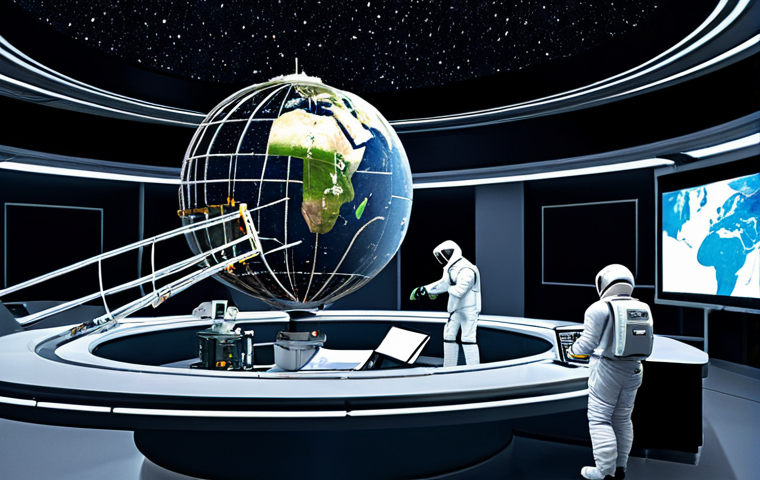
Imagine trying to drive across the country without being able to fill up your gas tank. That’s the current situation with space travel. Every mission has to carry all the fuel it needs from the get-go, which seriously limits how far we can go and what we can do. Orbital refueling changes everything. By setting up refueling stations in orbit, we can top off spacecraft, extend their missions, and even enable journeys to far-off destinations like Mars. I was reading an article the other day where an expert compared it to the Pony Express, setting up waystations along the trail. That really hit home for me – it’s about creating a sustainable infrastructure for space exploration.
1. Lowering Mission Costs Through In-Space Resource Utilization
Think about the savings! Instead of launching massive, fully-fueled rockets from Earth, we can launch smaller, more efficient vehicles and refuel them in orbit. This drastically reduces launch costs and makes space missions more affordable. I remember hearing Elon Musk talk about this years ago, how refueling would be a game-changer for Mars missions. It’s not just about money, though. It’s about making space exploration more accessible to more people and organizations.
2. Enabling Deep-Space Exploration: Pushing Beyond Our Limits
Orbital refueling is the key to unlocking deep-space exploration. Missions to Mars, asteroids, and beyond become feasible when spacecraft can refuel along the way. It’s like having a series of pit stops on a long road trip. The other day, I was watching a documentary about the Apollo missions, and I couldn’t help but wonder what they could have accomplished with orbital refueling capabilities. The possibilities are endless.
Navigating the Challenges of Space Debris: Cleaning Up Our Act
Space debris, or space junk, is a growing problem. It’s like a cosmic landfill, filled with defunct satellites, rocket parts, and other debris orbiting Earth at incredible speeds. This debris poses a serious threat to active satellites and spacecraft, and could even trigger a chain reaction of collisions known as the Kessler Syndrome, making certain orbits unusable. It’s a problem that needs to be addressed urgently. I saw a presentation recently where they showed simulations of how quickly debris fields can expand. It’s terrifying.
1. Active Debris Removal (ADR): The Space Janitors
ADR technologies are being developed to actively remove debris from orbit. These include robotic spacecraft that can capture and deorbit debris, as well as ground-based lasers that can nudge debris into lower orbits where they will eventually burn up in the atmosphere. I read about a company that’s developing a harpoon system to grab onto debris. It sounds like something out of a sci-fi movie, but it’s a real solution to a real problem.
2. Prevention Strategies: Reducing Future Debris
Preventing the creation of new debris is just as important as removing existing debris. This includes designing satellites that can be easily deorbited at the end of their mission, as well as implementing stricter regulations on the disposal of rocket stages. I think there needs to be more international cooperation on this issue. It’s a shared responsibility to keep space clean and safe for everyone.
The Role of Automation and Robotics: Building a Self-Sustaining Ecosystem
Space logistics relies heavily on automation and robotics. From automated docking and refueling systems to robotic repair and maintenance crews, these technologies are essential for operating in the harsh and remote environment of space. I was watching a video of a robotic arm performing a delicate repair on the International Space Station. It’s amazing what these machines can do. The fewer humans we need to send up there, the better.
1. Autonomous Navigation and Docking: The Precision of Space Travel
Autonomous navigation and docking systems allow spacecraft to navigate and dock with other objects in orbit without human intervention. This is crucial for tasks such as refueling, resupply, and satellite servicing. I can’t even parallel park my car properly, so the thought of a spacecraft docking autonomously in orbit is mind-blowing. It’s a testament to the power of AI and robotics.
2. Robotic Repair and Maintenance: Extending the Lifespan of Space Assets
Robotic repair and maintenance crews can perform repairs and maintenance on satellites and other space assets, extending their lifespan and reducing the need for costly replacements. I read about a project to develop robotic “mechanics” that can travel to satellites and fix them in orbit. It’s like having a space-based AAA service.
Data Analytics and Optimization: Making Space Logistics Smarter
Data analytics plays a crucial role in optimizing space logistics operations. By analyzing data from sensors, satellites, and other sources, we can identify inefficiencies, predict potential problems, and improve the overall performance of the logistics network. It’s like having a real-time dashboard for the entire space ecosystem. I think data analytics is going to be a huge growth area in the space industry.
1. Predictive Maintenance: Preventing Failures Before They Happen
Predictive maintenance uses data analytics to predict when equipment is likely to fail, allowing for proactive maintenance to be performed before a failure occurs. This reduces downtime and extends the lifespan of critical components. I remember reading about how airlines use predictive maintenance to keep their planes flying safely. The same principles can be applied to space logistics.
2. Route Optimization: Finding the Most Efficient Paths Through Space
Route optimization algorithms can be used to find the most efficient paths for spacecraft to travel through space, minimizing fuel consumption and travel time. It’s like having a GPS for the cosmos. I saw a presentation where they demonstrated how route optimization could save millions of dollars in fuel costs for a single mission.
Financing the Future: Investment and Economic Opportunities
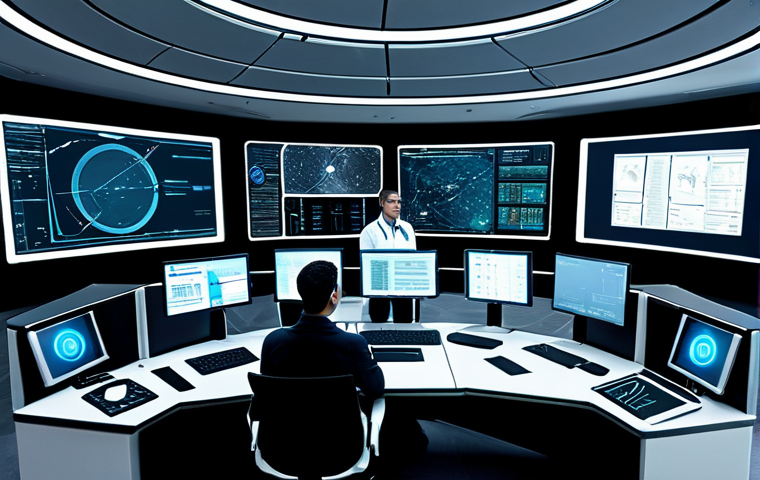
Space logistics is not just a technological challenge; it’s also an economic opportunity. The development and operation of space logistics infrastructure requires significant investment, but it also has the potential to generate significant returns. From private companies to government agencies, there’s a growing recognition of the economic potential of space logistics. I was talking to a venture capitalist the other day, and he said that space logistics is one of the most promising investment areas right now.
1. Public-Private Partnerships: Sharing the Risks and Rewards
Public-private partnerships (PPPs) are a common way to finance large-scale infrastructure projects, including space logistics infrastructure. PPPs allow governments and private companies to share the risks and rewards of these projects. I think PPPs are essential for unlocking the full potential of space logistics. It’s about combining the resources and expertise of both sectors.
2. New Business Models: Creating Value in Space
Space logistics is creating new business models and opportunities. From in-space manufacturing to asteroid mining, the possibilities are endless. I read about a company that’s planning to build a space-based 3D printing facility. It’s like having a factory in orbit. These new business models are going to transform the space economy.
The Ethical Considerations: Ensuring a Sustainable Future in Space
As we expand our presence in space, it’s important to consider the ethical implications of our actions. We need to ensure that space is used responsibly and sustainably, for the benefit of all humanity. This includes protecting the space environment, preventing the weaponization of space, and ensuring equitable access to space resources. I think we need to have a global conversation about the ethics of space exploration. It’s too important to leave to the engineers and politicians.
1. Environmental Protection: Preserving the Space Environment
Protecting the space environment from pollution and debris is essential for ensuring the long-term sustainability of space activities. This includes minimizing the creation of new debris, as well as mitigating the impact of space activities on the Earth’s atmosphere. I think we need to treat space like a national park. It’s a precious resource that needs to be protected.
2. Preventing Weaponization: Keeping Space Peaceful
Preventing the weaponization of space is crucial for maintaining international peace and security. Space should be used for peaceful purposes, such as scientific research, communication, and exploration. I think we need to have a strong international treaty banning weapons in space. It’s a dangerous path to go down.
Future Trends and Innovations: The Road Ahead
The field of space logistics is constantly evolving, with new technologies and innovations emerging all the time. From advanced propulsion systems to autonomous robots, the future of space logistics is full of exciting possibilities. I’m excited to see what the next decade brings. I think we’re on the cusp of a new era of space exploration and development.
1. Advanced Propulsion Systems: Reaching New Heights
Advanced propulsion systems, such as electric propulsion and fusion propulsion, have the potential to significantly reduce travel times and fuel consumption for space missions. This would make it easier and cheaper to reach distant destinations in the solar system. I’m particularly excited about the potential of fusion propulsion. It could revolutionize space travel.
2. In-Space Manufacturing: Building in Orbit
In-space manufacturing allows us to build structures and components in orbit, reducing the need to launch them from Earth. This could revolutionize the way we build satellites, space stations, and other space assets. I think in-space manufacturing is going to be a game-changer for the space industry. It’s like having a factory in orbit.
| Challenge | Solution | Benefit |
|---|---|---|
| High Launch Costs | Orbital Refueling | Reduced fuel requirements, lower mission expenses |
| Space Debris | Active Debris Removal | Safer orbital environment, protection of assets |
| Limited Mission Duration | Robotic Servicing | Extended satellite lifespan, reduced replacement costs |
| Inefficient Logistics | Data-Driven Optimization | Streamlined operations, minimized resource waste |
In Conclusion
The future of space logistics is not just about reaching for the stars, but also about building a sustainable and responsible presence in space. By addressing the challenges of orbital refueling, space debris, automation, data analytics, and ethical considerations, we can unlock the full potential of space exploration and development for the benefit of all humanity. The journey is complex, but the destination is worth every effort.
Useful Information to Know
1. NASA’s Space Technology Mission Directorate: Learn about the latest advancements in space technology, including space logistics.
2. SpaceX’s Starship Program: Follow the progress of SpaceX’s Starship program, which aims to revolutionize space transportation with fully reusable rockets.
3. The European Space Agency (ESA): Discover ESA’s initiatives in space logistics, such as the Clean Space initiative for addressing space debris.
4. SpaceNews: Stay updated on the latest news and developments in the space industry, including space logistics.
5. The Secure World Foundation: Explore research and analysis on space sustainability and governance issues.
Key Takeaways
Orbital refueling can drastically cut mission expenses by reducing fuel requirements. Active debris removal is crucial for maintaining a safe and operational orbital environment. Automation and robotics are essential for extending the lifespan of space assets and enabling remote operations. Data-driven logistics optimization is helping streamline operations and minimize resource waste. Sustainable funding and responsible ethical practices are crucial for the long-term viability of space endeavors.
Frequently Asked Questions (FAQ) 📖
Q: What exactly is space logistics and how does it differ from regular logistics here on Earth?
A: Well, imagine all the usual challenges of getting something from point A to point B, but amplified by the vacuum of space, extreme temperatures, radiation, and distances that boggle the mind.
Regular logistics deals with trucks, trains, and ships. Space logistics is about rockets, orbital platforms, and potentially even entirely new methods of propulsion.
It’s not just about delivering cargo; it’s about building and maintaining a supply chain in an incredibly hostile environment, ensuring everything from life support to spare parts are available where and when they’re needed.
I remember reading about simulations where a single failed delivery could jeopardize an entire Martian mission! Talk about high stakes.
Q: What are some of the biggest hurdles to overcome in making space logistics a reality?
A: Oh, there are plenty! Cost is a massive one, obviously. Launching things into space is still incredibly expensive.
Then there’s the reliability issue. Space is unforgiving, and even minor malfunctions can have catastrophic consequences. Think about it: sending a wrench to a broken piece of equipment on Mars can’t involve the “oops, wrong size, I’ll run back to the store” mentality.
We also need to develop better in-space storage and transfer techniques. Imagine trying to refuel a spacecraft in zero gravity while dodging micrometeoroids.
No pressure, right? Honestly, it feels like we’re inventing the wheel all over again, but this time, the wheel has to work in the vacuum of space. I saw a presentation last year by a NASA engineer who said the biggest problem wasn’t the engineering challenges, but coordinating all the different teams working on different parts of the supply chain!
Q: I’m a student interested in a career in space logistics. What kind of skills and experience should I focus on developing?
A: That’s fantastic! It’s a field with huge potential. First, a solid foundation in engineering or a related scientific field is crucial.
Aerospace, mechanical, or even chemical engineering would be great starting points. But it’s not just about the technical stuff. You’ll need strong problem-solving skills, excellent communication abilities, and a good understanding of logistics and supply chain management.
Look for internships at companies involved in space exploration or aerospace manufacturing. Even experience in traditional logistics companies can be valuable, giving you a foundation in the principles of supply chain management.
Personally, I wish I’d taken more courses in robotics and autonomous systems! The more you can learn about the intersection of those fields, the better positioned you’ll be.
Oh, and don’t underestimate the importance of being a good team player. These projects are massive and require collaboration across many different disciplines.
Good luck, and maybe one day you’ll be the one figuring out how to get my order of freeze-dried ice cream delivered to the lunar base!
📚 References
Wikipedia Encyclopedia
구글 검색 결과
구글 검색 결과
구글 검색 결과
구글 검색 결과
구글 검색 결과
